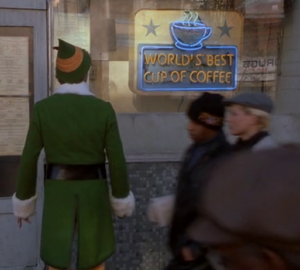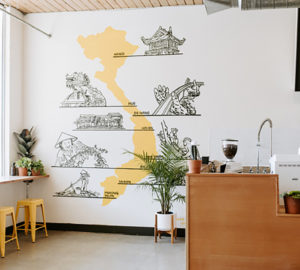Science has been coffee’ing so hard recently, and we’ve seen multiple articles over the past week on a wide range of coffee-related topics. From the health benefits of coffee to breakthroughs in zero-gravity espresso consumption, science is all up in your coffee. And so we’re all up in science. Here’s a look back at some of the most important current work coming from those women and men sworn to don the white coats.
Coffee > Skin Cancer
Add reduced risk of deadly skin cancer to the long list of possible health benefits of drinking coffee. As first reported by CBS News, a group of researchers has put forward a paper in the Journal of the National Cancer Institute stating that drinking coffee, in particular non-decaf coffee, can mitigate the risk of contracting malignant melanoma, the fifth most common form of cancer in the United States and the most fatal type of skin cancer. While previous studies have shown a link between coffee consumption and a reduced risk of contracting other non-melanoma forms of skin cancer, this is the first study to focus specifically on malignant melanoma.
The researcher found, presumably while trying to discover what gives baristas their heavenly glow, that people who drank four or more cups of coffee a day had a 20 percent lower risk of developing malignant melanoma than those who drank less coffee. Using survey data from a NIH-AARP Diet and Health Study, the researchers analyzed eating habits and coffee consumption for nearly 450,000 participants. After adjusting for factors relevant to skin cancer rates, like UV radiation exposure, body mass index, age, gender, physical activity, alcohol consumption, and smoking history, they found that the protective effects of caffeinated coffee increased as the amount of consumption increased; decaf was not shown to have the same healthful benefits. Further research is required before any definitive stance is taken, but right now it looks like, for the sake of your health, you should drink a lot of coffee.
White Mist

Have you ever wondered what that thin layer of white mist hovering just above your hot coffee is? Scientists at Kyoto University have. Gizmodo reports that a team of Japanese researchers is digging into what exactly the white mist consists of. The mysterious haze was first noticed nearly 100 years ago and the general consensus is that it consists of tiny water droplets (the scientific community has roundly rejected my theory the mist is the coffee’s soul being released into the ether), but until now no experiments have been conducted to test the validity of this thought.
To find out, the research team put a high-powered camera in a cup of hot water with the lens aimed at the water’s surface to observe what happened as more and more heat was introduced to the liquid. They discovered that the general consensus was mostly correct—the mist is made of tiny water droplets, about 10 micrometers (or 1/100th of a millimeter) in radius, releasing from the liquid and hovering 10 to 100 micrometers above the surface, where they naturally form into a triangular lattice pattern. Due to the neatly organized pattern, the research team concluded that the water particles are electrically charged. This also helps explain why the mist hovers: the electrically charged particles are repelled by the surface, causing them to hang just above it.
So, now scientists know what the mist is, but they don’t know why it is. That is to say, scientists know the mist is a collection of charged water particles, but they have no idea why or how those particles received a charge in the first place. And so the mystery continues. I’d like to officially reintroduce my mist-as-coffee-souls theory, since everyone knows souls are made of ions.
Espresso in Space

Lastly, space coffee. Drinking espresso has always been a ground-dweller’s game, where gravity can reliably be counted upon to keep hot liquid from floating in any number of directions. Not so in outer space. So if astronaut Mike Dexter wants to drink coffee, he would have to suck the hot liquid out of a bag, the mere idea of which gives me the howling fantods. But a group of researchers from Portland State University is looking to change the means of consumption to something more akin to that of earth coffee. As Wired reports, the team has spent the last year designing a mug that allows for the intake of espresso, or any hot liquid for that matter, in low-gravity environments.

The impetus for this project came after Italy announced it would be putting an espresso machine on the International Space Station. So, of course, a proper demitasse would also be required. The cup had to be designed to control the movement of the liquid with little to no assistance from gravity. Relying upon mathematical models and fluid dynamics, the mug’s curvature is made specifically to both keep espresso confined to the cup and easily transfer espresso to an astronaut’s maw. The resulting shape is… bizarre. As Liz Stinson of Wired puts it, “[it looks] a little like a plastic baby boot.” To me, it looks a little more, how to put it nicely, adult (let’s just say, I wouldn’t feel comfortable using this mug when having an espresso with my mom). But the shape serves a purpose.
“You’ll notice a pointed corner in the center of the cup; this strange bit of design is what makes it possible to drink liquids in low gravity. The corner essentially acts like a wick, using surface tension to guide liquid toward your mouth. As soon as an astronaut touches her mouth to the lip of the cup, a capillary connection is formed and the liquid travels up the vessel and forms sippable balls of coffee,” writes Stinson.
One of the coolest parts about the cup is how it will get to the Space Station. Thanks to the ISS’s new 3D printer, plans for the cup can be downloaded and then created in orbit. This could help reduce volume and weight aboard the ISS, two things that come at a premium in such tight quarters. The cups are still in testing, so no word yet on when they will make their interstellar debut. And running at a cool $500 per cup to create, don’t expect them to be making appearances at any cafes around town, either. But still, these true spro-to-go cups represent one small sip for man, one giant drink for mankind.
Zac Cadwalader is a Sprudge.com staff writer based in Dallas. Read more Zac Cadwalader on Sprudge.


































